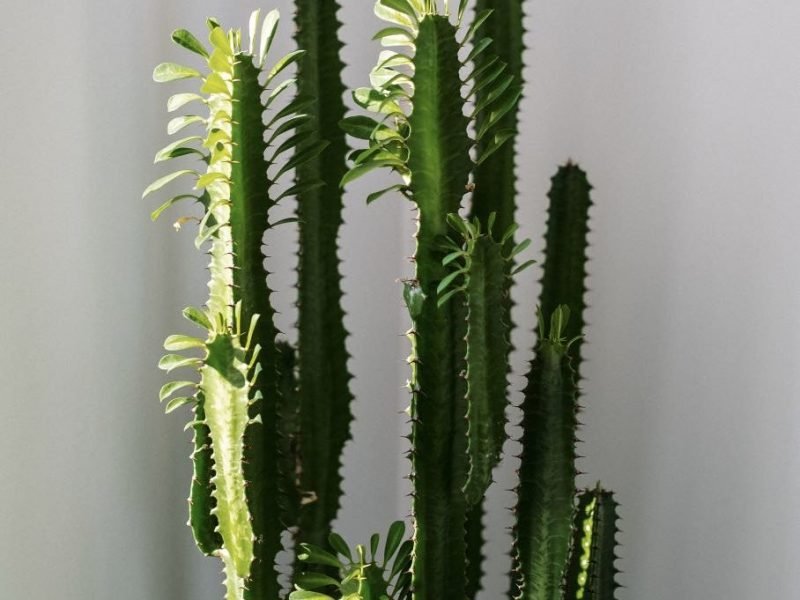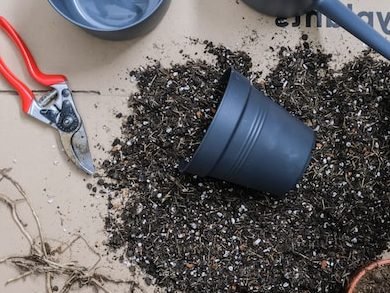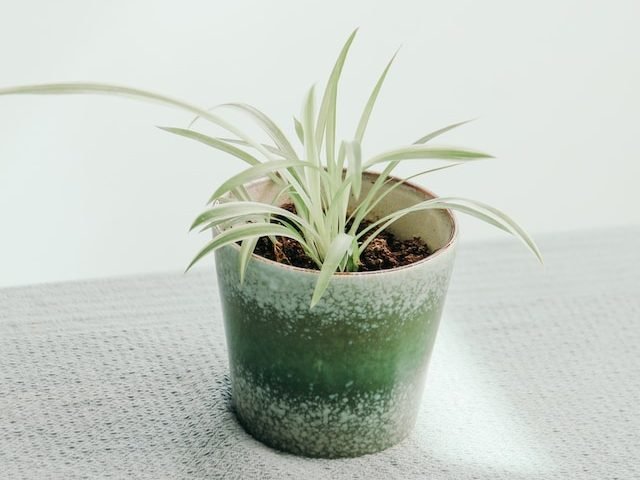
Before you start caring for your African Milk Tree like a cactus, it’s important to remember that these incredible plants are actually succulents. This means there are subtleties in how you care for it and how you spot any common problems that might crop up. If you notice that the leaves or stem on your African Milk Tree has turned brown, then this can often mean there is something wrong. In this post, we will be going through the different causes of brown leaves on an African Milk Tree to help you determine what’s happening and how to fix it.
Too little water can cause brown leaves
Underwatering can also be a common cause of brown African Milk Tree leaves. Although they are succulent plants which means they won’t die on you instantly if they have to go a little longer without water, consistent underwatering will dry out your African Milk Tree and the leaves causing them to turn brown.
You want to be 100% confident that there is an issue with how much or how often you are watering your African Milk Tree before you change anything about your routine. If you switch to giving your plant too much water when it didn’t need it, this can cause a whole range of further issues. Always check the soil moisture before altering your watering routine. If the soil is really dry and feels like sand when you take your African Milk Tree out of its pot then this could be the issue.
You want to slowly reintroduce watering by giving your African Milk Tree a bit of water once a day for a week and your plant should slowly begin to recover. Underwatering causes less damage to the root system than overwatering for succulents so your African Milk Tree should begin to bounce back after a few weeks. Keep an eye on how moist the soil is so you don’t go the other way and overwater accidentally.
Too much water can also cause brown leaves
If the leaves on your African Milk Tree have turned dark brown and a little mushy you are most probably overwatering. Another sign of this is if some of the brown leaves are starting to droop down.
Overwatering is one of the main killers of African Milk Trees as you might not always be able to tell before it is too late. African Milk Trees don’t like to be sitting in a lot of water for long periods of time as this can lead to root rot meaning the plant becomes unstable and also cannot get needed nutrients from its root system. Waterlogged soil also gives off quite a damp and musty smell so get up close to your plants every so often to check on this.
If you think that the brown leaves on your African Milk Tree are a consequence of overwatering, check the moisture of the soil immediately and adjust watering accordingly. The most reliable way to do this is by using a moisture meter which will tell you how damp or dry the soil is.
We also recommend replacing the potting soil straight away (rather than waiting for it to naturally dry out) so that the roots on your African Milk Tree can begin to recover. Cut away the rotten roots and brown leaves so that your African Milk Tree focuses all of its energy on regenerating healthy growth. You’ll want to use a high-quality potting mix such as this one from Miracle Gro to make sure your African Milk Tree gets the right balance of nutrients.
Drainage Issues
Sometimes it may not be your watering schedule that is causing your African Milk Tree to turn brown, but the poor draining of the soil and pot. You can very easily increase the amount of drainage in the pot by mixing in a small amount of perlite into the soil. This will make it far easier for water to flow through and out of the drainage holes of your pots (oh also, you should also check to make sure your pots have drainage holes). Another really simple method is to add a few small stones or pebbles to the bottom of your pots, this helps in making sure that the drainage holes are never blocked by any clogged up soil or loose debris.
Although clay or terracotta pots can be a little bit more expensive or breakable, their upsides are much more than just the aesthetic. The clay they’re made of is permeable which means that some of the water in your soil can evaporate through the sides of the pot. This isn’t the case for the plastic pots that most use, which instead hold in all of that moisture. So sometimes it is worth investing a little more to make sure that the roots of your African Milk Tree are not sitting in too much moisture.
Too much sunlight
If your African Milk Tree is getting too much bright direct sunlight each day you may start to notice brown patches appearing on the leaves. This is because the plant is being scorched by the intense sunlight. Although African Milk Trees are succulents, they can also be damaged by really intense light.
Although this problem is irreversible once it has happened, it’s pretty simple to fix for the future. Move your African Milk Tree to a place in your home with less light and it should begin to recover. Monitor the sunlight levels in your home across the year because you might be able to move your plant closer to the window over winter when the sun isn’t as strong. If you prefer you can carefully trim away the burnt patches on your African Milk Tree’s leaves so your plant looks healthier and can focus on producing new healthy growth.
You can use a light monitor to figure out if your plants are getting the right amount of sunlight. We love this one which is available on Amazon here.
Corking
If none of the methods above seem to explain why your African Milk Tree is turning brown, then corking might be the reason. Corking is a completely natural process that happens as African Milk Trees age. If the base of your plant has turned quite thick and light brown in colour, then it’s most definitely corking. You don’t need to worry about this happening or change a thing about your care or your African Milk Tree’s environment.
Those are the 5 most common reasons why African Milk Trees develop brown leaves. Some issues are more serious than others but it’s important you react quickly and diagnose the problem before it’s too late. If the problem is caused by watering or lighting issues, but you have caught the problem early, then you shouldn’t have too much trouble getting your African Milk Tree back to full health.
To find out more about caring for your plant, as well as other common issues check out our African Milk Tree care guide.
If you are struggling to save your plant and the issue seems to be getting worse, then you might want to consider propagating your African Milk Tree to save some of the healthy parts.















